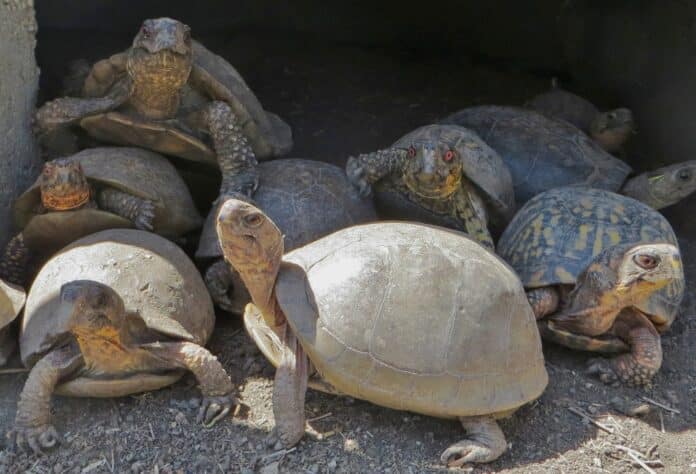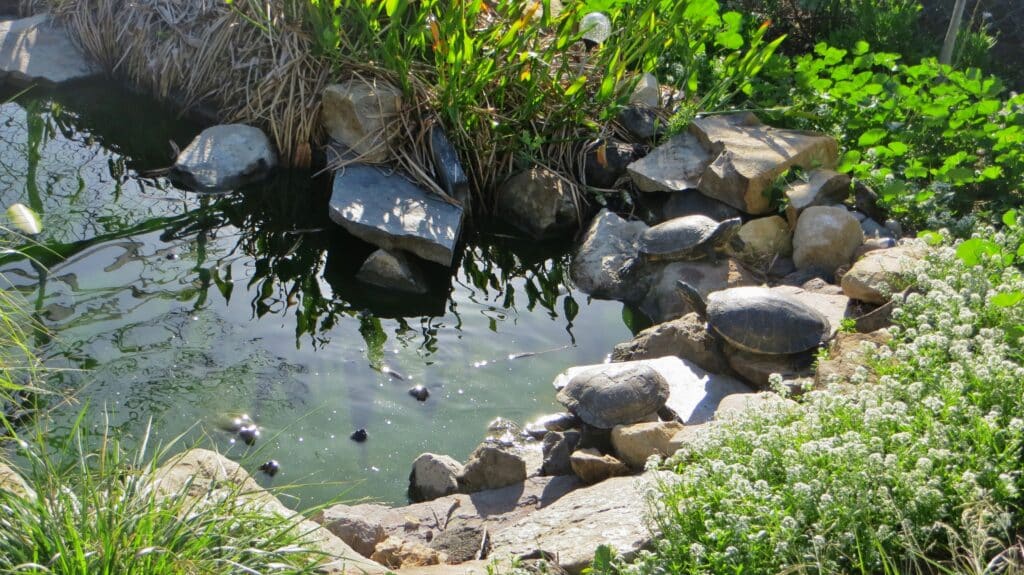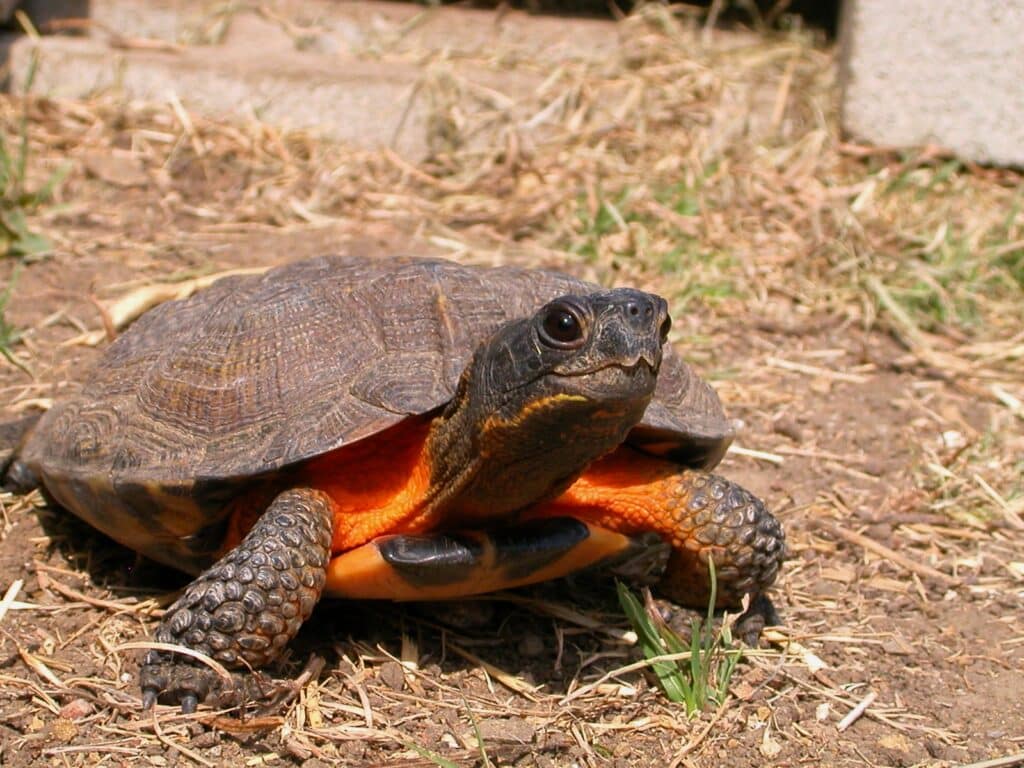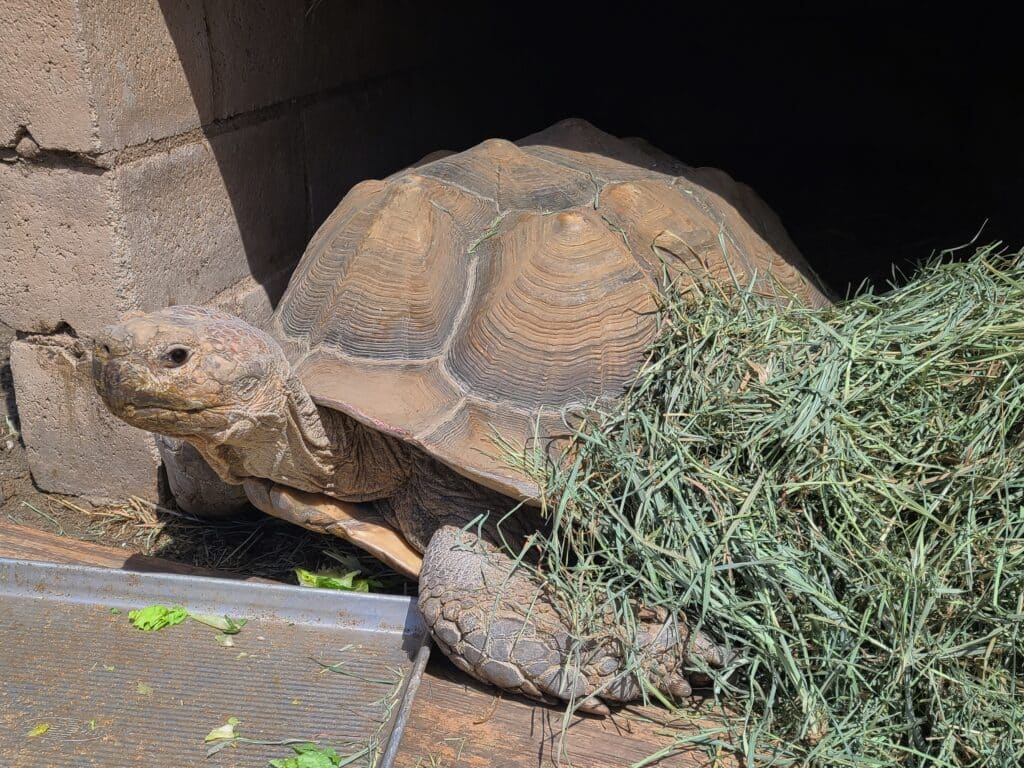
World Turtle Day every May 23 has been one of the nonprofit’s biggest successes
Since 1990, over 4,000 turtles and tortoises have passed through the gates of the American Tortoise Rescue (ATR) sanctuary in Malibu, according to Susan Tellem, executive director of the nonprofit organization whose mission is “the protection of turtles and tortoises around the globe.”
And it’s not sea turtles they rescue; it’s the mostly smaller freshwater turtles and tortoises that people acquire as pets in pet stores, or even as exotic food.
What’s the difference between turtles and tortoises? Tortoises are generally vegetarians and live exclusively on land, while turtles are omnivorous and spend a lot of time swimming.
American Tortoise Rescue took in unwanted, lost, sick and injured turtles during its first 28 years of operation, which they would then release or re-home when ready. However, they mostly stopped accepting new reptiles over five years ago.
“It just got to be so overwhelming,” Tellem said, “and now there are a lot of turtle rescue places, whereas when we first started, we were the only ones … But our sanctuary doors will always be open to turtles that are unadoptable, deformed or have special needs.”



Today, Tortoise Rescue is the home and lifetime sanctuary for over 100 tortoises and turtles that can’t be released back to the wild. The nonprofit also serves as a national clearinghouse for information about the care, feeding, and rehabilitation of endangered and captive-bred tortoises. In addition, they work to abolish “live market” slaughter of turtles, the illegal sale of hatchlings and turtles under four inches, and the importation and exploitation of a variety of species.
“We educate people about how to take care of their turtles and tortoises,” Tellem said. “We get a lot of calls and emails from people who bought a turtle and then are unhappy about it or having problems; as well as emails from people wanting to adopt a turtle.
“We’ve placed rescued animals all over the U.S. and many foreign countries, and have many contacts, so we’re able to refer people to places where they can adopt.”
The mantra is, “Don’t buy a turtle; always adopt a [rescue] turtle.”
Tellem says it’s surprising how many people don’t read up on how to take care of the turtle they have — how to clean the tank, what to feed it, how big it’s going to get, etc.
The rescue receives a lot of calls from people that bought a sulcata tortoise (a breed originating in Africa) when it was small, not realizing that it can weigh over 200 pounds as an adult and live for 100 years.
“Sometimes it was just an impulse buy,” explained Tellem, “and now the tortoise is 10 years old and 30 pounds, and has started to cause a lot of problems like knocking over furniture or trying to crash though the back door to come in the house and get food.”
The western Malibu property where Tellem and husband/co-founder Marshall Thompson live and run the tortoise sanctuary is about an acre in size, with a turtle pond and a turtle hospital.
Back in 2000, ATR launched “World Turtle Day,” which is “shellebrated” every year on May 23. Tellem and Thompson still consider it to be one of their biggest successes. They created it in order to increase respect, appreciation for, and awareness of turtles and tortoises — some of the world’s oldest creatures. World Turtle Day is now observed with events, fundraisers, and social media photos by turtle lovers in the U.S., Canada, U.K., Borneo, India, Australia, Greece, South Africa, and Pakistan.
According to ATR, turtles can feel happiness and pain, show a sense of humor as well as affection, and have personality. Living wild in the safe environment of the sanctuary, they search for food, do funny things like walk backwards, and make friends with other turtles.
They come from a variety of sources. A huge snapping turtle that had been kept in a bathtub for 30 years by its owner was shipped back to his natural habitat by the sanctuary. Others were discovered by the government being smuggled in suitcases to China. Others escaped and were found on a street.
Random important advice and bits of information from Susan about turtles and tortoises:
- If you see a turtle crossing the road, always make sure to send it in the direction it was going — don’t turn it around.
- If you see turtles less than 4 inches being given away as prizes or sold, that’s illegal. Report it to local animal control or the California Department of Fish and Wildlife.
- Never let pet turtles dig tunnels, because they can get lost or stuck
- Turtles are clever escape artists, and can crawl out or dig under anything
- Turtles hibernate from the time it gets “cold” in Malibu until March or April
- Some turtles need extra heat or special foods like live fish
- Some people try to dump unwanted turtle/tortoise pets here in the ocean, which kills them — most are freshwater only.
Last summer, ATR launched its “Senior Class” fundraiser honoring the sanctuary’s longest residents: Eastern box turtle “Squish” came to the rescue with a caved-in waist caused by a six-pack plastic ring. Bunkle, another eastern box turtle, is ATR’s “Mascot & First Rescue Turtle” from 1990. Spinner is a box turtle with a spinal injury that’s been hand fed for 25 years. Queenie is an Asian box turtle suffering from deformities as a result of poor care from her former owner, including a misshapen jaw and overgrown shell. She joined 25 other Asians at ATR suffering from similar problems. Fluffy is a cooter water turtle from the Midwest dumped in the L.A. River in 1994, and is now 35 to 50 years old.
For more information or to see how to help this all-volunteer organization, go to tortoise.com/ or email Susan at info@tortoise.com

